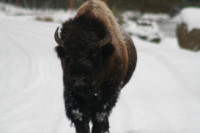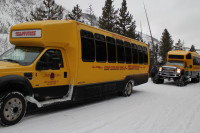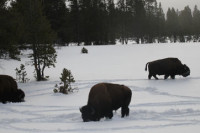Travel
Snowcoaching in the Yellowstone Park in Montana
Have you ever dreamt of visiting the Yellowstone Park in the winter? What about making your wish come true?
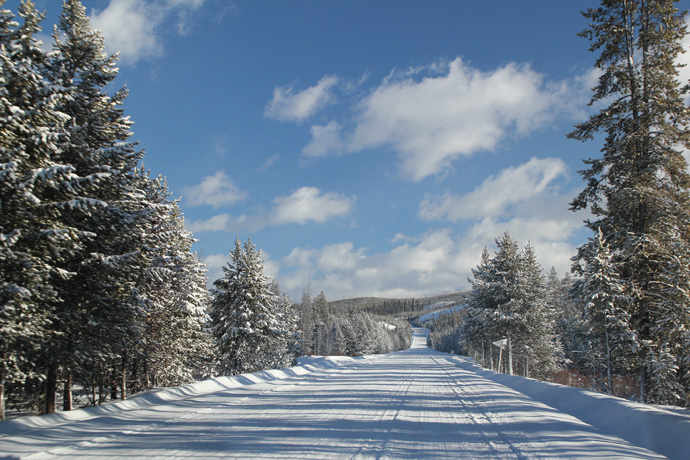
Leaving the Yellowstone Park – copyright Véronique Gray
The only way to travel through the park at that time of the year is by snowcoach and snowmobile. If you go with your family the most enjoyable and safe way is to use a snowcoach. In the Yellowstone Park there are many reputable companies, which offer day snowcoach tours. The best is to reserve early as it can fill up quickly especially for the Christmas holidays. During your trip there will be many stops to see some wildlife. In addition there is a long break for lunch at the Old Faithful for about 1h30 minutes. If you get lucky enough you may be there when the geyser erupts.
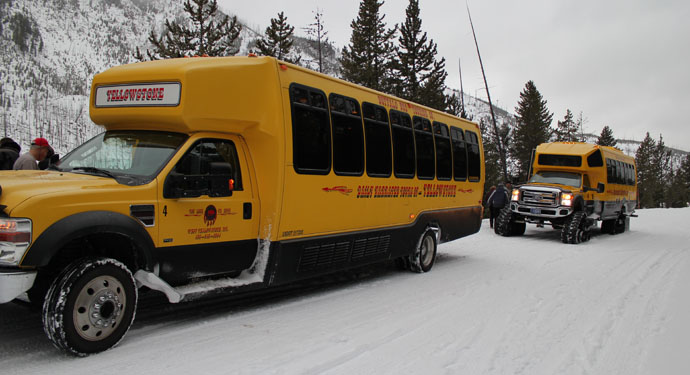
Snowcoach, West Yellowstone Park – copyright Veronique Gray
Vivamost tried a snowcoaching tour one time in Montana. Our guide, Brad, already had 11 years of experience. He said how much he loved 40F temperatures and preferred Yellowstone in the winter because it is more isolate. The temperatures can vary between -70F to 117F. Such a temperature difference has only be recorded in the state of Montana.
Brad was really friendly, talkative and knew his topic well. We started the tour with a bit of geography and history. You may not realize it but the Yellowstone Park covers only 3% of the lands of Montana but 96% of Wyoming. The park covers 2,2 million hectares. Due to the 1988 fires, which burnt 26% of the woods, the visitors have now greater views.
During your snowcoach’s trip you will learn about the park, the animals which live there and about the thermal features. While a few hotels opened in the park in the late 1800’s, the first one at the Old Faithful opened in 1904.
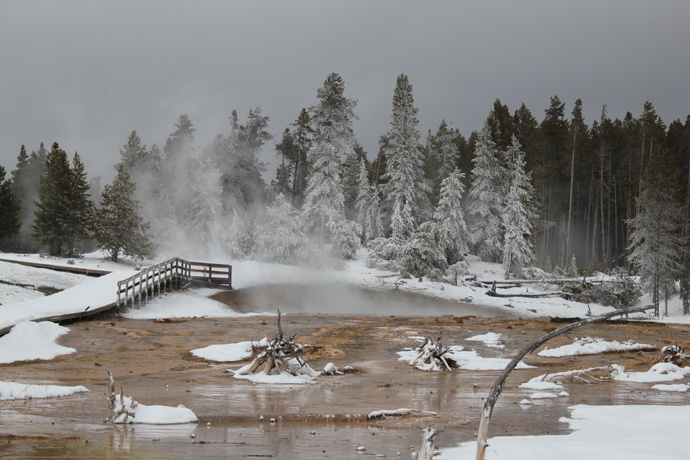
Yellowstone Park in the winter during a snowcoach trip – copyright Veronique Gray
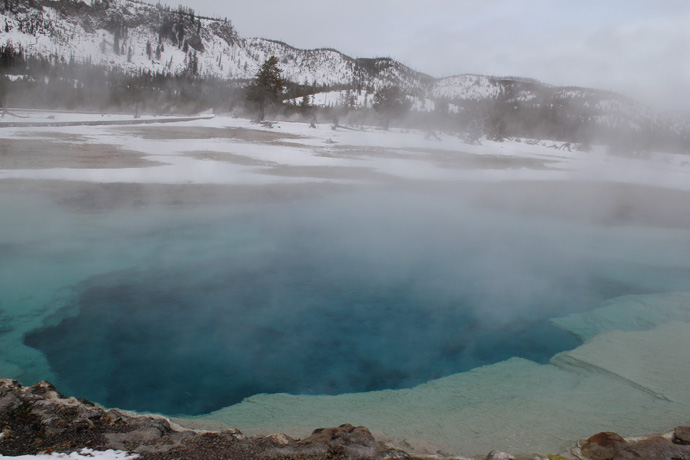
Yellowstone geo thermal feature – copyright Véronique Gray
Brad said that every day in the park is different. The day before we came he had seen a bird he had never seen before. As he talked he pointed to the picture of the bird. Two days before he had seen a bear near Old Faithful. We were obviously eager to see one too, but it did not happen. Apparently it is not uncommon to see one until late December, time they normally start hibernating.
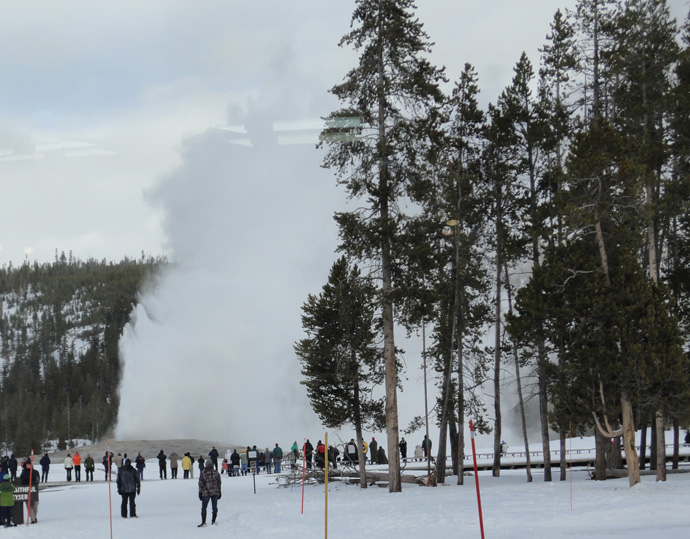
Old Faithful geiser eruption in the Yellowstone Park – copyright Véronique Gray
No grizzly for us that day, but would we see more than a coyote or a Jack rabbit like the Windham family in 1885? The family had come from New York to visit the park and it had taken them 29 days from Bozeman to arrive at the entrance of the park. Once there they almost saw no wildlife! I can assure you will see a bit more today.
The first animals we saw were trompett swans. They come from Alberta, Canada, to nest in the winter. In the olden days, the birds were captured to make bags and furs. You will probably see some eagles or a boadcat. Brad shared with us than thirty years ago no one would have seen a bobcat in the winter but now it is not rare at all. You may see an elk in the park but if you most likely want to spot one, drive on Highway 191 on the way to Bozeman, Montana. Brad explained that elks are called mooses here and red deers in Europe.
We saw many bisons that day. In the summer they stay on the Hayden Valley. One of them got really close to us and again our guide warned us about the buffalos, who can run faster than humans. “Don’t run for bears, but for bisons,” he said. So, we went back quickly into our snowcoach.
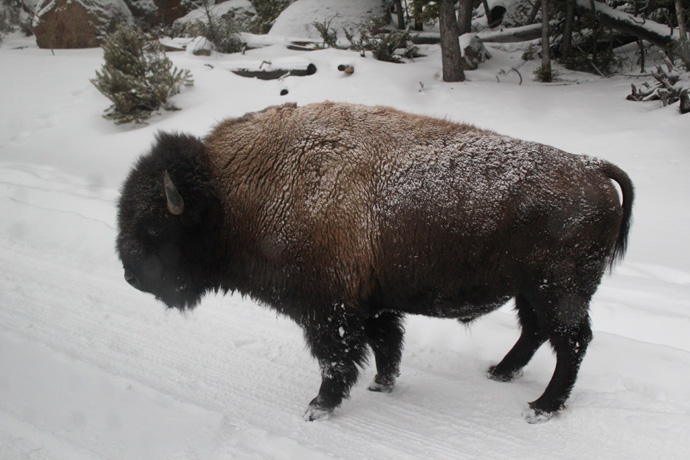
Buffalo in the Yellowstone Park – copyright Véronique Gray
In the distance we observed two moving animals, which we thought were wolves. In fact they were beautiful coyotes. We saw some tracks and Brad explained that the wolf track is the size of a hand and a coyote a finger. He also shared that the biggest wolf ever spotted in the park weighed 147 pounds!
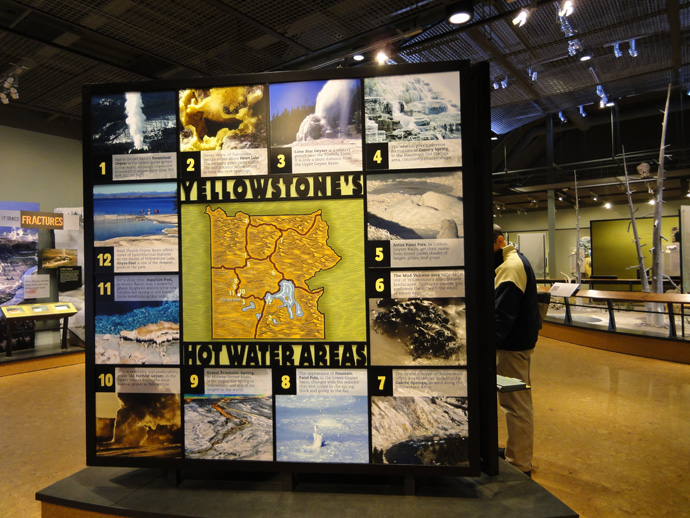
Old Faifthful Interpretive center – copyright Véronique Gray
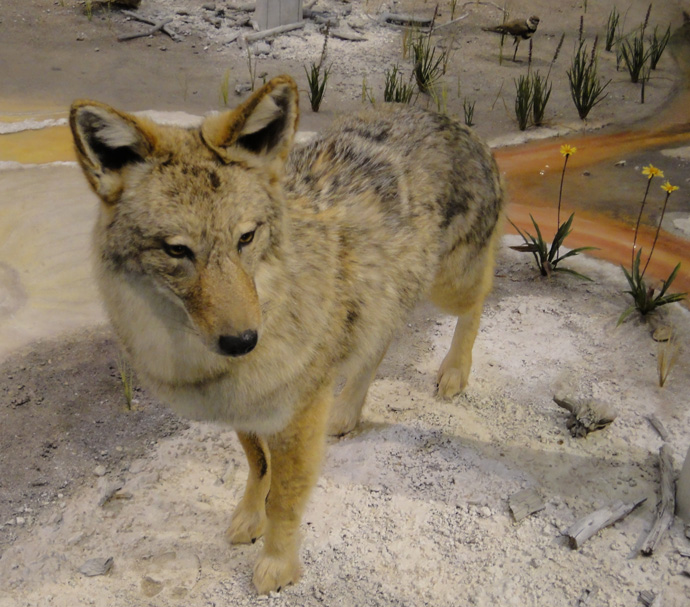
A wolf at the education center in Old Faithful, Yellowstone Park – copyright Véronique Gray
You will also learn how the frogs and the 5 species of snakes can survive through the harsh winter.
Whatever you do when you are out of your snowcoach, don’t wander too far on your own and stay on the wooden path. Brad explained how dangerous it can be around the hot spots. In 2011 there was one death and many burning injuries.
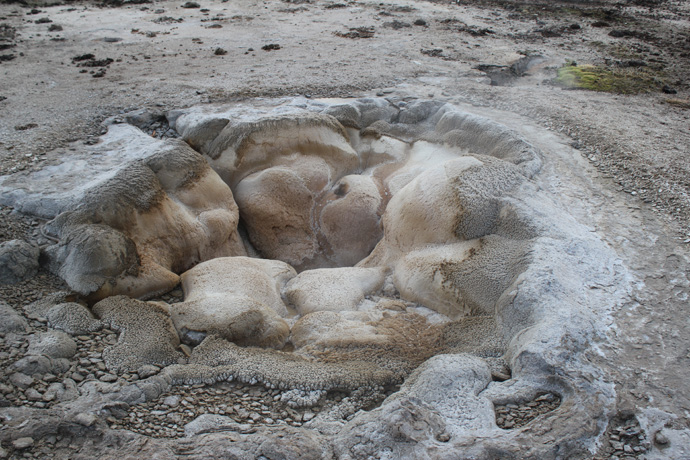
Shell Spring in the Yellowstone Park smaller – copryright Veronique Gray
In the evening if you are looking for a place to eat, why not the cosy bar, saloon and restaurant, Wild West. It has delicious pizzas and live music.
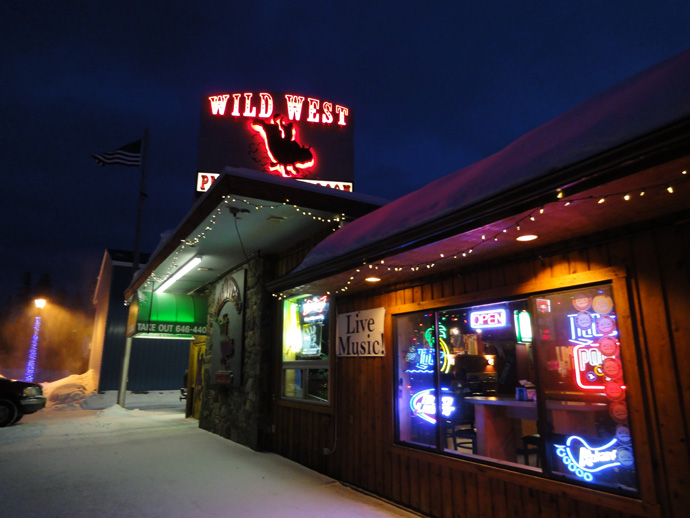
Wild West Bar and Restaurant in West Yellowstone Park – copyright Véronique Gray
Snowcoaching is fun and interesting for people of all ages and it is a fantastic way to explore Montana!
Vivamost used the Yellowstone Vacations Tours. The company is really reliable. If you want to bring your children, it is child-friendly. We advice bringing children from the age of 4.

